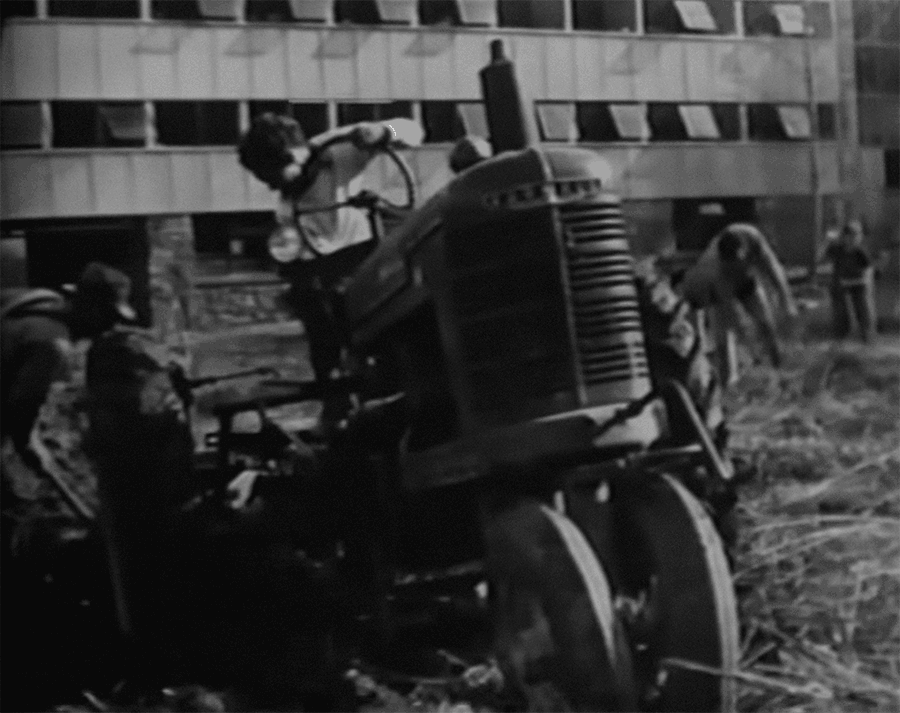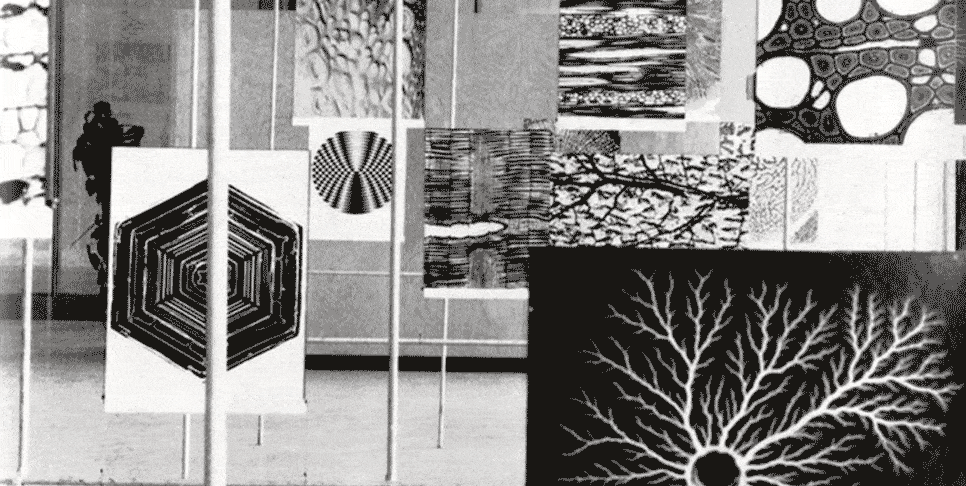

“Gene [Bernofsky] and I had actually bought the property in Southern Colorado and decided that we were going to build A-frames. But after [Buckminster] Fuller’s lecture, we decided to go with geodesic domes.”
Clark Richert — Adam Gildar, “Domes, Droppers, and The Ultimate Painting: an Interview with Clark Richert and Richard Kallweit”, Hippie Modernism: The Struggle for Utopia, Andrew Blauvelt (ed.), (Minneapolis: Walker Art Center, 2015), 386. Also available online (accessed March, 2021).

Drop City
Echoing the “Groundworks” timeline: 1966
“Drop City is of anthropological interest, then; its singular architectural qualities make an important supplementary appeal. Revisited with a fresh eye, Drop City appears more than utilitarian. Drop City constructions were intellectually engaging, formally memorable, communally involving, and endowed a powerful sense of place to the seasonal mud and dust of south eastern Colorado. Drop City’s architectural style was suggestive of the explosive shards of Droppers’ early art projects at the University of Kansas, of prismatic LSD visions, of stained glass, of petals opening, and of the sunrising. (→ 2) Drop City affected a manner bestriding form and informe. Unlike the derided paisley swirl usually associated with psychedelia, it exerted architectonic appeal, full of abrupt nodes, edges, and disjunctions. Drop City’s architectural notoriety was attributable to its ‘bricolage’ of materials and ideas, which made the geometric design principles of Richard Buckminster Fuller (1895–1983) into a countercultural language and then metamorphosed them. In 1966, Drop City was pioneering the amateur geodesic dome and its variant the ‘Zome’; it soon hosted passive solar energy systems as well. Drop City was to the counterculture as Constructivism was to the early Soviet state. …
Drop City’s multicolored patchwork architecture, set against the background of the mountains in the Culebra Range, pulsed selflessly as a psychedelic beacon to those attempting to leave mainstream society. Because of its media presence, writes the historian of 1960s communes Timothy Miller, ‘Drop City stood as an accessible model of what a new America might look like’, a condensation into a single place of ‘most of the themes that had been developing in other recent communities – anarchy, pacifism, voluntary poverty, sexual freedom, rural isolation, psychedelics, art’. ‘We were not models, hippies, or a commune’, Bernofsky now laments for his city. ‘Those trademarks are strictly the invention of establishment media.’”
|
Simon Sadler — “Drop City Revisited”, Journal of Architectural Education,
Vol. 59, No. 3 (February 2006), Taylor & Francis, London, 6. Accessed here, April 2021
|
Around 1962, Gene Bernofsky and Clark Richert, students at the University of Kansas, developed an artistic act that consisted of dropping objects from their second-floor apartment onto the street below. These Droppings inspired the name they later gave to the settlement initiated when they bought, in 1965, a small piece of land in Colorado. At Drop City, they were soon joined by other artists, writers and inventors, and they started building a community that celebrated creative work. Drop City's constructions were based on Buckminster Fuller’s geodesic domes and the designs of Steve Baer, a pioneer in geometric structure and solar energy. |
“maat Explorations” is an ongoing programme that delves into the socio-cultural and environmental transformations stemming from the current bio crisis and ecological destruction. It provides an insight into the hard science of climate intervention and the creative speculations behind innovation-led research to safeguard our planetary co-existence. Prominent in this strand is the installation Earth Bits – Sensing the Planetary, that opens access to the complex interconnectedness between the environmental and the energetic quests and its reverberation through decades of artistic production, political and cultural movements traced from the 1960s until today. On maat ext., a series of #groundworks hashtags introduce the critical explorations that feed into the complex interconnectivity between the environmental and energetic quests, and its reverberation through decades of artistic production, political and cultural movements traced from the 1960s until today. |













